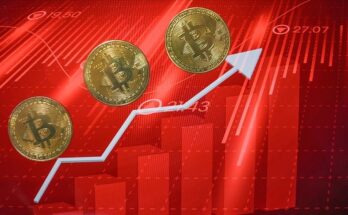Key Takeaways
- After Bybit announced that futures trading with up to 12.5x leverage was now possible, Goatseus Maximus jumped 76% in one day, from $0.42 to $0.74.
- Goatseus Maximus became the second-largest token by volume on decentralized exchanges as a result of the token’s sharp surge in trading volume.
- The robust market reaction to Bybit’s token futures trading offering is demonstrated by this price spike.
A 76% price spike results from Bybit’s debut of Goatseus Maximus (GOAT) futures trading with 12.5x leverage, which drives significant trading volume on DEXs.
In the past day, the price of Goatseus maximus (GOAT) has increased by 76%, from $0.42 to $0.74.
The addition of GOAT for futures trading, which enables users to trade the meme coin with leverage up to 12.5x, was announced by Bybit on October 23.
After the announcement, the price of goat increased by 76%.
GOAT Moves Up to #2 in DEX Trading Volume
With $94.51 million moved in the last day, Goatseus Maximus is currently the second most traded token on decentralized exchanges (DEXs), according to GeckoTerminal.
With a trading volume of $98.96 million, it trails Flavia Is Online (FLAVIA) by a slim margin.
Decentralized exchanges are the primary locations for Goatseus Maximus trade. With 23.51% of GOAT’s trading volume over the last day, Raydium is in the lead, followed by Orca with 19.85%, according to CoinGecko.
These two significant DEXs on Solana (SOL) outperform other exchanges and control goat trading.
Gate.io, one of the few centralized exchanges (CEXs) that trade goat, contributes 9.57% of the total trading volume.
Bybit does not provide token spot trading while having introduced futures for GOAT. This is similar to other market trends for meme coins where price spikes have been driven by leveraged trading.
For instance, Simon’s Cat (CAT) futures were offered by Binance on October 22 and had a 60% price increase in a single day.



